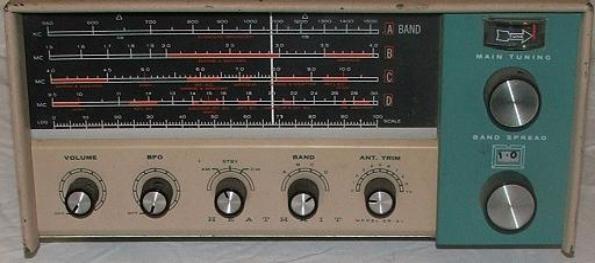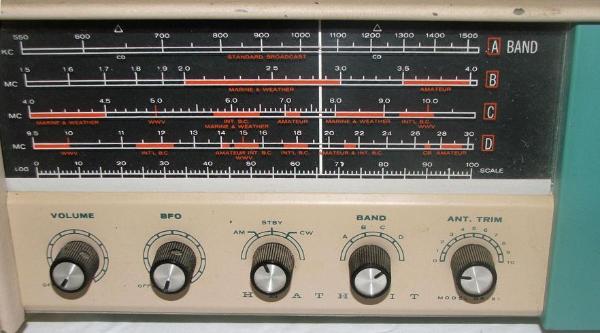| This build-it-yourself Heathkit GR-91 is like my first receiver. It was a very basic, 4 tube radio, and it had a poor power supply which caused annoying AC hum in the audio. The GR-91, like most cheaper radios from that era, had Slide-Rule tuning where the white dial indicator slides left or right under the glass with the frequency markers. Example- Above, the GR-91 shows to be on Band-D and it reads halfway between 19 and 20 megacycles. You might assume that you are tuned to 19.5 megacycles but electrically the actual frequency could be OFF by PLUS or MINUS several 100KC(kilocycles). If you could tune in radio station WWV then you'd be on 20MC. Otherwise you'd need to use a 1 megacycle crystal calibrator to determine either 19 or 20 megacycles and then another calibrator for finer frequency resolution. Back then, most radio enthusiasts had to live with this kind of inaccurate tuning. The best operating strategy was to actively tune back and forth, slowly, across the frequency of interest. Tuning the GR-91 to a precise frequency was almost a black art, even if you had a crystal calibrator. By comparison, you could simply crank in the desired frequency if you were fortunate enough to have the Collins R-390 or 51S-1 receiver. |

